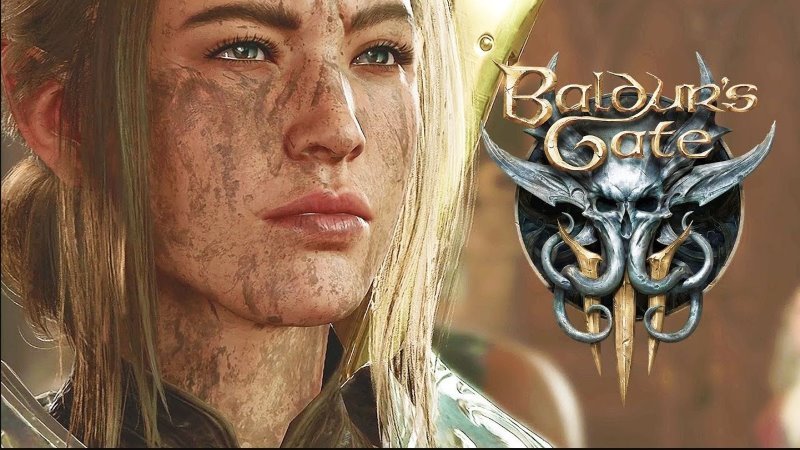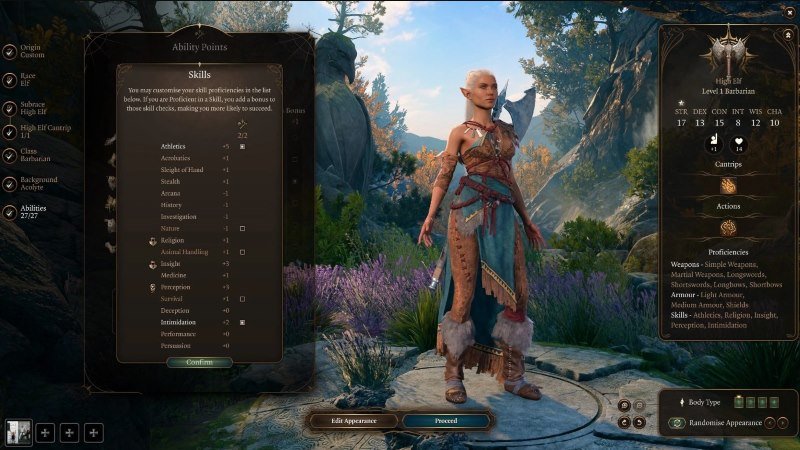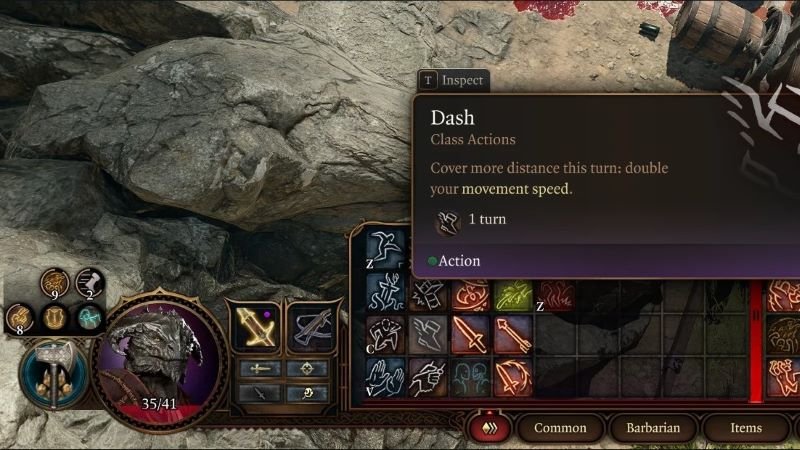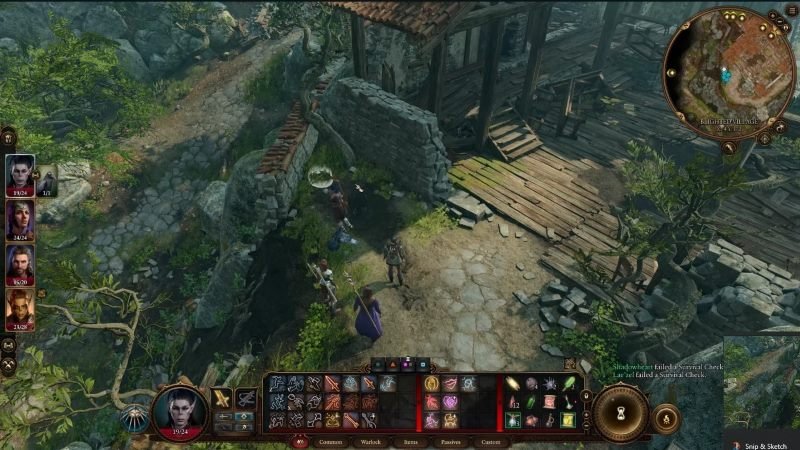As you embark on your adventure in Baldur’s Gate 3, there are crucial things you should know before delving into this epic role-playing experience. From character creation to intricate gameplay mechanics, this guide is your gateway to mastering the game. Get ready to explore the world of Baldur’s Gate fully prepared, with tips and insights that will enhance your journey from the very start.

Here are Some Things That You Should Know Before Starting the Game
These key points will overhaul your Baldur’s Gate III game experience.
Ease Your Mind – Class Selection Made Simple
At the beginning of Baldur’s Gate 3, you have to decide lots of things about your character, like how they look, what race they are, and what kind of abilities they have. These choices are important and will stick with you throughout the game.
But don’t worry. We have a guide to help you pick the right abilities and skills for your character. So you can fix any errors you made during the character creation process. It’s like a second chance to make your character just the way you want.
Mastering the Mechanics: Diving into D&D 5e’s Fundamentals
Baldur’s Gate is closely tied to the rules and world of Dungeons & Dragons (D&D). The most recent game in the series, Baldur’s Gate iii, uses the rules of D&D’s 5th edition. This is significant because if you’ve played D&D using these rules before, you’ll have a head start in understanding how the game functions. You’ll be familiar with concepts like character classes, spells, and abilities.
However, if you’re new to D&D, this connection to the 5th edition can make the game seem a bit daunting initially, as D&D can be complex. But there’s a silver lining. Baldur’s Gate 3 is an excellent way to learn about D&D because it immerses you in the rules and mechanics.
A Quick Dip into the World of D&D in Baldur’s Gate 3
In the world of D&D in the game Baldur’s Gate 3, your character doesn’t do things purely by your choice. They rely on their abilities and skills. These abilities and skills are like their strengths and knowledge.
And when your character tries to do something, like attacking an enemy or picking a lock, the game uses dice rolls to determine if they succeed. So, it’s a mix of your character’s abilities, skills, and a bit of luck with dice that decides the outcome of their actions in the game.
ABILITIES AND SKILLS in Baldur’s Gate 3
In the game, your character has six abilities that define their capabilities. These are Strength (physical Strength), Dexterity (agility and precision), Constitution (resilience and determination), Intelligence (knowledge and cleverness), Wisdom (intuition and practical sense), and Charisma (personal charm and influence). Each of these abilities is ranked on a scale from 1 to 20, where 1 is very low, 10 is average, and 20 is exceptional.

These abilities influence your character’s skills. For example, if your character has high Strength, they’ll excel at skills related to physical activities like Athletics, which includes tasks like jumping. If your character has a high Charisma, they’ll be particularly skilled in areas that require personal charm and influence, such as performance. So, your abilities affect how well you can perform various tasks and interact with the game world.
PROFICIENCY in Baldur’s Gate 3
Proficiency in the game is like a special advantage your character has. It’s a bonus that you add to things your character is good at. For instance, if your character is a Gold Dwarf, they are Proficient with Warhammers. This means when they use Warhammers, they get a bonus to improve their performance.
So, what type of game is Baldur’s Gate 3? if your character is skilled in a particular area or has special training, their Proficiency gives them an edge when dealing with tasks related to that skill or equipment. It’s like having a little extra expertise in those specific areas.
The Perfect Blend – Real-Time and Turn-Based Gameplay
In the game, you’ll navigate and interact with the world primarily by using your mouse. You can control your character’s movement by clicking where you want them to go. When you come across something intriguing, like a treasure chest or an enemy, you can click on it to interact with it.
This means that clicking on a chest might open it to reveal its contents. By clicking on an enemy could initiate combat. So, your mouse clicks are like your character’s actions in the game world. It allows you to explore, engage with objects, and confront foes as you progress through the game. So, primarily Baldur’s Gate 3 turn based game especially when you are fighting others.
Exploring World
During the parts of the game where you’re exploring and moving around, things happen in something like real-time. Your party members, once you’ve gathered them, will follow you as you move, and events occur as you click on them. It’s as if the game world is constantly moving while you explore.
However, when you get into combat (in D&D, this is when you roll to determine who goes first, known as initiative), the game changes to a turn-based mode. The order in which characters and enemies take their turns is shown at the top of the screen. This turn-based system allows for more strategic and deliberate actions during battles. It’s a shift from real-time exploration to a structured approach when fights break out.
Move, Action, & Bonus
Move: This is exactly what it sounds like – you can move your character aroufnd the game world. By default, you can move up to a certain distance, which is usually 30 feet, but it can vary depending on your character’s race. So you can explore and reposition yourself on the battlefield.
Action: This is the primary thing you do during your turn, like attacking with a weapon, casting a spell, or interacting with objects in the game. It’s the main action that defines your turn’s purpose.
Bonus Action: Bonus actions are smaller, quicker actions you can take in addition to your main action. These can include things like drinking a healing potion, making a quick, handy move or using certain special abilities that are marked as bonus actions. They are like extra actions that can give you an edge in combat or help you with specific tasks.

A Unique Form of Turn-Based Interaction
In Baldur’s Gate 3, many of the important decisions happen during conversations. When you’re talking to someone, you’ll be presented with different options for how to respond. Most responses are there to simply continue the conversation and don’t require any special actions.
However, some responses are marked with a skill in brackets at the beginning, like “[INTIMIDATION].” Choosing these options means you’re attempting to influence the conversation with a particular skill. When you select them, you’ll see a 20-sided die and a target number appear on the screen. Clicking the die initiates a “roll,” and the outcome of the roll determines whether you succeed or fail in using that skill to influence the conversation.
When you’re deciding which response to choose, hover your cursor over the capitalized word in brackets (e.g., “INTIMIDATION”). This will show you the bonus you have for that skill. It’s a good idea to pick responses that align with skills you’re proficient in it. Because it increases your chances of successfully influencing the conversation in your favor. So, in important conversations, use your character’s strong skills to your advantage.
Impactful Decisions in the Game World
In Baldur’s Gate 3, the game is designed in a way that won’t make you fail the entire game because of a single mistake or a low-skill check, like failing to pick a lock. It won’t lock you into a “fail state” or prevent you from progressing for the rest of the game just because of one choice.
However, the game does allow you to make choices that can lead to significant consequences. You might end up killing an important character or selling an item crucial for a quest. These choices are a part of the game’s charm, and they make your decisions matter.
Additional Reading: Prince of Persia The Lost Crown – The Final Preview.
What’s great about Baldur’s Gate 3 is that it offers multiple ways to achieve your objectives. If you fail in one approach, you can often find an alternative solution. Maybe there’s another character to talk to or a different path to take that leads you past a locked door. Instead of viewing failures as stopping points, think of them as new challenges to overcome.
Every choice, whether a success or failure, adds to the uniqueness of each playthrough. There’s no one right way to play the game, and that’s what makes it exciting and replay-able. Your choices shape the story, and every experience can be different, making the game full of surprises and adventures.
The Perils of Relying on Autosave in Baldur’s Gate 3
In Baldur’s Gate 3, there is an autosave feature, but it can be somewhat unpredictable. At times, it will trigger just before important conversations or battles, creating a convenient save point if things don’t go as planned. However, more often than not, it might not trigger at critical moments, potentially causing you to lose hours of progress if something goes wrong.
To ensure you don’t lose your hard-earned progress, it’s a good idea to make a habit of saving the game regularly, even for seemingly trivial reasons. You can create a new quicksave by pressing F5 on your keyboard, and to load the most recent one, press F8.
Here are some instances where saving can be a smart move:
- Reorganizing your inventory within your party
- Visiting a vendor to sell items you’ve collected
- Equipping a new weapon or making significant changes
By saving often, you can avoid having to redo mundane tasks when you want to get back to the more crucial parts of the game. It’s a simple but effective way to ensure you don’t lose your progress unexpectedly.
The Power of Background Checks in Baldur’s Gate 3
In Baldur’s Gate 3, some actions and checks are determined by dice rolls, and not all of them require your direct input. One common type of check you’ll encounter is a “perception check.”

You’ll know a perception check is happening when you see a blue icon appearing above your character’s head. The game is rolling virtual dice in the background to decide if you notice something in your surroundings. If you succeed in this roll, you might spot a trap that allows you to progress in the game. You can’t actively influence or control in this roll. It is important to note that when it comes to perception checks, the game conducts these checks for your entire party. All it takes is one member of your party to succeed, and they will inform the group of what they’ve noticed.
Additionally, the game can also roll an “investigation check” in specific situations. This typically occurs when you’re examining objects like chests, large dressers, or other interactive items. In this case, the role is performed only by the active party member. If that member fails the check, you have the option to switch to another character and have them attempt the roll. If they succeed, they will reveal what they’ve found. So, while you can’t control these checks directly, your party members may take turns investigating objects to discover hidden secrets or items.
Exploring the World of Moving Objects in Baldur’s Gate 3
In the game, you can actively interact with objects by clicking and dragging them. This might not be immediately obvious when you start the game. If you encounter a door you can’t open, try moving some nearby boxes or items to see if there are hidden levers or switches that could help you gain access.

This ability to move objects can also be quite handy when dealing with traps you discover through a perception check. For example, if you detect a gas trap, you can place an object like a vase on top of it. Doing so can prevent the gas from harming you if you accidentally trigger the trap. So, don’t hesitate to experiment with moving objects in the game world. They can reveal hidden secret switches or offer protection from dangerous traps.
Conclusion
Before embarking on your Baldur’s Gate 3 adventure, understand the importance of character creation, including race, class, and abilities. These choices directly impact your gameplay, shaping your character’s role and abilities. Make informed decisions to enhance your gaming experience in this captivating and complex role-playing world.

0 Comments